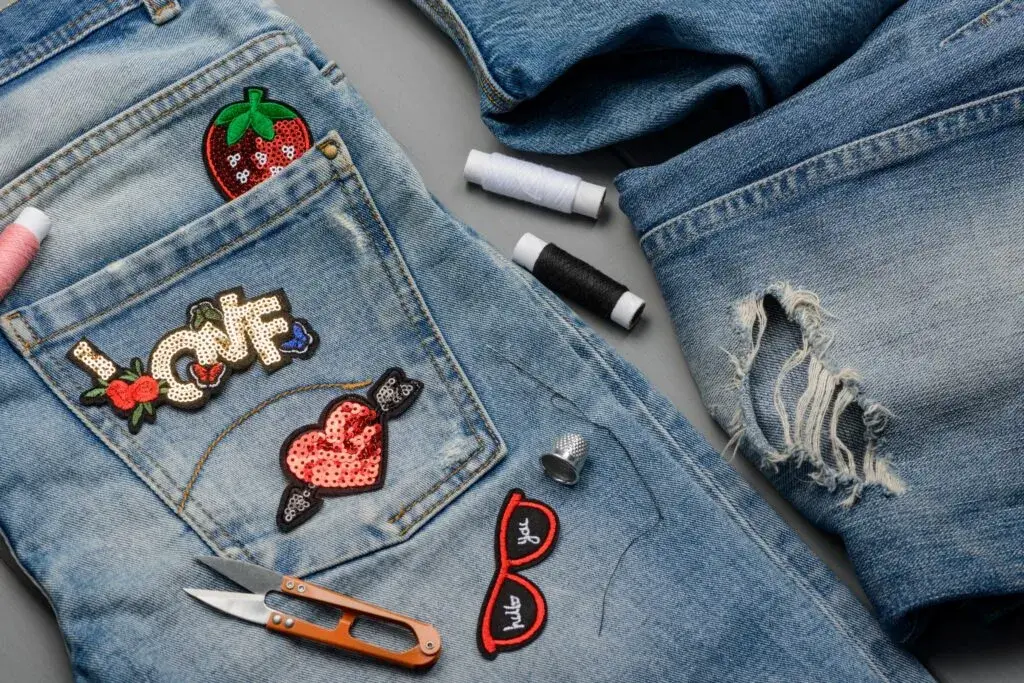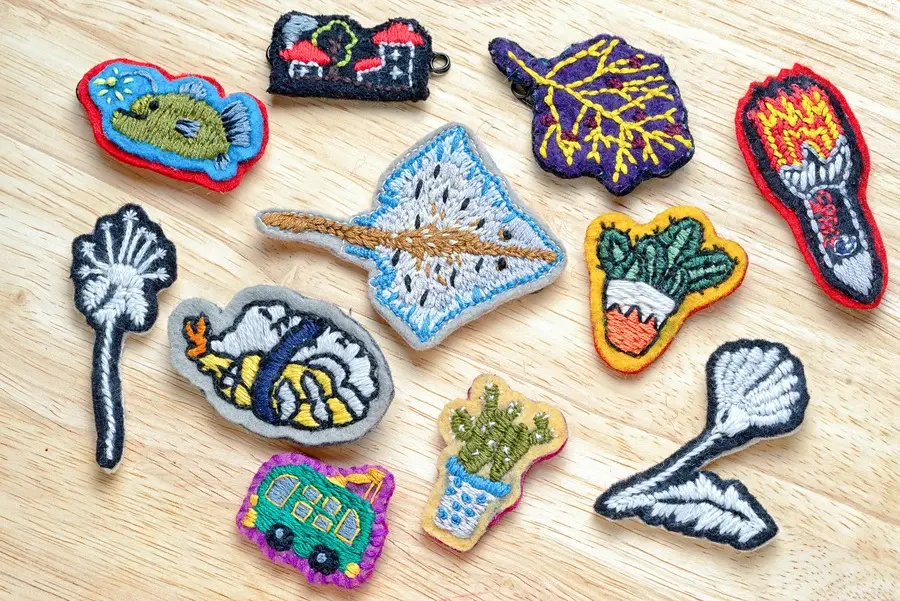How To Keep Enamel Pins From Falling Off: Tips and Tricks
Enamel pins are everywhere! They are a versatile and stylish way to showcase your personality or celebrate achievements. While traditionally used on uniforms to signify rank or affiliation, they’ve now become sought-after collectibles and trendy accessories. Whether you're displaying them on jackets, bags, or hats, keeping your enamel pins secure is essential to prevent losing them.
Enamel pins are crafted by baking vibrant layers of enamel onto metal backs, with one or more posts used to attach them to fabric. Unfortunately, a loose fastener or damaged post can make it tricky to keep your pin in place. Don’t worry, though—here are some simple tips to ensure your favorite pins stay put and look great!
Enamel pins are a fun and stylish way to express yourself. However, keeping them securely attached can be a challenge. Here are some tips to ensure your pins stay put:
1. Safety Pin Backs:
Safety pin backs are an excellent choice for securing larger or heavier enamel pins. Their locking mechanism ensures the pin stays firmly in place, minimizing the risk of it falling off or rotating. This makes them a reliable option for long-term use, especially on thicker and more durable fabrics like denim or canvas.
However, safety pin backs do come with a few challenges. Aligning them perfectly on your fabric can be a bit tricky, and making adjustments might create additional holes in delicate materials. For the best results, stick to using safety pin backs on sturdy fabrics where durability matters most.
- Ideal for larger or heavier pins.
- Provides a strong and secure hold.
- Can be more difficult to attach and remove.
Kickstart your designs with AI
Leverage the power of AI to streamline your design process,
turning your ideas into polished, production-ready products with ease.
2. Super Glue:
Super glue is a surprisingly effective solution for repairing and securing enamel pins. If the post breaks, you can fix it by applying a small dab of super glue to the stud, reattaching the broken post, and carefully wiping away any excess glue. Once it dries, your pin will be as good as new!
Super glue can also be used for a more permanent hold. If you’ve found the perfect spot for your pin and don’t plan to move it, add a small drop of glue to the backing before fastening it to the post. After it dries, your pin will stay securely in place without any risk of slipping or falling off.
- Perfect for broken posts or loose fittings.
- Provides a permanent bond.
- Use sparingly to avoid damaging the pin or fabric.
3. Magnetic Backings:
Magnets are a fantastic option for securing enamel pins without leaving holes in your fabric. This makes them ideal for thin or delicate materials where you want to avoid damage. With magnets, it’s easy to adjust the placement of your pin, making them a convenient choice for jackets, uniforms, and other frequently worn items.
For thicker fabrics like coats or bags, a strong magnet will ensure your pin stays securely in place. Magnets are also widely used for workplace nameplates since they allow for daily wear without harming clothing—a win for both style and practicality!
- Non-destructive to fabric.
- Easy to attach and remove.
- Best suited for thinner fabrics or items that need frequent pin changes.
4. Multiple Pin Backs:
For larger or longer enamel pins, multiple pin backs provide extra stability and help prevent them from rotating or falling off. While smaller pins typically have a single post, adding additional pin backs ensures a stronger hold. Plus, if one fastener fails, the other serves as a backup, keeping your pin securely in place.
However, keep in mind that using multiple pin backs will create more holes in the fabric, which may not be ideal for delicate materials. This method works best for thicker, more durable fabrics like denim, jackets, or backpacks, where the extra security outweighs the potential fabric damage.
- Offers additional security for larger pins.
- Reduces the risk of the pin falling off.
- May cause more wear and tear on the fabric.
5. Proper Storage:
Proper storage is key to keeping your enamel pins in excellent condition and reducing the risk of damage. While it might be tempting to leave pins on your clothing—especially on outerwear like coats or formal jackets—this can weaken posts or backings over time, making them more prone to bending, breaking, or falling off.
To keep your pins secure, consider removing them from clothing when not in use and storing them in a safe, designated area. A pin display case, organizer box, or even a soft cloth pouch works well for keeping everything together. Always store your pins with the backings attached to prevent losing small pieces, and ensure they’re ready to wear when needed.
- Store pins in a safe place to prevent damage to the posts and backings.
- Avoid leaving pins attached to clothing for extended periods, as this can weaken the fabric and the pin.
Which Type of Pin Backing Is Right for You?
Choosing the right pin backing can be tricky, but it’s essential for securing your pins comfortably and securely. The fabric type, as well as the size and weight of the pin, all play a role in selecting the best option for your needs. Below, we've outlined the different types of pin backings and how they can best be used to suit your preferences.
- Butterfly Clutch – A popular and versatile choice, the butterfly clutch features metal backers that are circular, with two small tabs that you pinch to remove. This type of backing is considered a standard and is often used for securing ribbons and pins to military uniforms.
- Rubber Clutch – Similar in size and shape to the butterfly clutch, the rubber clutch has a soft material that can offer a more comfortable fit. It also fits securely onto the pin post, providing a stable hold while being gentler on the fabric.
- Deluxe Clutch – The deluxe clutch is an upgraded version of the butterfly clutch. With a flatter profile and a brushed metal finish, it allows the pin to sit flush against the fabric, offering a sleek and low-profile appearance. It’s perfect for a more refined, elegant look.
- Safety Pin – The traditional safety pin backing is ideal for larger, longer pins that can’t be secured by a post alone. They are perfect for thick or multi-layered fabrics, providing a reliable and sturdy hold.
- 2-Piece Magnet – Featuring a small magnet and a matching counterpart, this backing is ideal for delicate fabrics. Magnets help avoid poking holes, making them perfect for securing pins on fabrics that need extra care.
- Bar Magnet – The bar magnet is a larger, stronger magnet that is perfect for bigger or heavier pins. It also works well with thicker fabrics, providing a firm, reliable hold without causing any damage to the material.
- Bent Legs – This unique backing features two bent metal prongs designed to attach pins to a button. It’s a special option for those looking to secure their pin in a distinctive and innovative way.
By considering the type of fabric you're working with and the size of the pin, you can select the best pin backing to suit your needs, ensuring both comfort and security for your pins. If you’re unsure, feel free to reach out – we’re happy to help guide you to the perfect choice!
Frequently Asked Questions
How Can I Make My Enamel Pin More Secure?
To keep your pins securely in place, you have several excellent options. Rubber backings provide a snug and comfortable fit, while magnetic backings are highly versatile—they’re easy to adjust and won’t leave holes in your clothing.
Looking for Custom Enamel Pins? We Can Help!
Enamel pins serve various purposes—they’re often featured on uniforms, given as thoughtful gifts, or collected and traded as keepsakes. Many organizations create custom enamel pins to celebrate and honor employees’ dedication and achievements. While these pins hold significant sentimental value, they can sometimes detach and get lost easily.
There are a lot of things you can do to help keep your pins in place. Secure backings, magnets, and even super glue can all help prevent them from falling off. It’s also a good idea to store the pin and backing together in a safe spot to prevent damage. Check out THE/STUDIO for custom enamel pins and several backing options.




